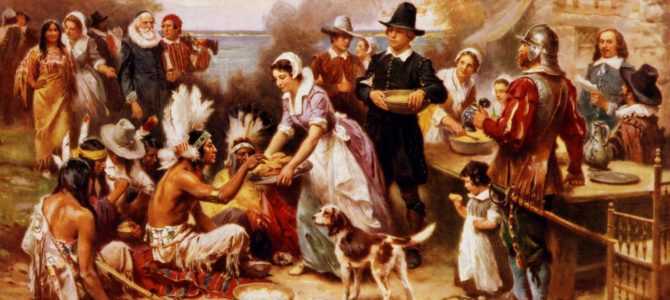
The Pilgrims who arrived in what became the Massachusetts Bay Colony 400 years ago almost didn’t make it through their first winter.
Crippled by disease and poor planning, the first Pilgrims landed in Plymouth at the worst possible time to embark on a new settlement. The Mayflower ironically set sail from the English port at Plymouth in September 1620, in a late exit. They crossed the Atlantic over a 66-day voyage that was wrought with seasickness while cramping the occupants of two ships into one. The second ship traveling with the Mayflower, the Speedwell, had to turn back over structural failures at the start of the trip.
The journey served as a preview of the hardship to follow. The boat was crowded in the middle of storm season, with a freezing deck above and a cargo of sick passengers below on so little food they had to resort to their reserves of dried meat and beer days after leaving England. One sailor died on the passage, marking the first casualty on a mission that would eventually claim half of those on board in their first year in the New World.
The Pilgrims ultimately landed at Cape Cod in November and disembarked to found Plymouth in the middle of December. Most know the tale of the first Pilgrim winter between 1620 and 1621, when the unprepared colonists faced unbearable suffering that played no small part in defining their experience for generations to come as heroes whose experiment in self-government paved the way for a new nation a century and a half later.
At the time, however, disease, death, and despair gripped the settlement featuring only a few structures built in the middle of winter. Building supplies had to be ferried to and from the shore since the Mayflower had been anchored about a mile from the coast due to the shallow harbor forcing builders to wade in the freezing water while going to and from their primary vessel.
By February, colonists were dying in droves, often two or three in the same day from disease and exposure. Seventeen of them perished in February alone, and by spring, only 52 of the original 102 Pilgrims who had set off from England had survived.
The native inhabitants, meanwhile, had endured struggles of their own suffering from a plague brought by European fishermen in Maine. Indeed, the site of the Pilgrim settlement had been built on an old Wampanoag village decimated by the local pandemic.
Massasoit, the leader of the Wampanoag tribe, ultimately made friends with the Pilgrims, forging a political alliance that protected both parties from rival neighbors. In the fall of 1621, about a year after the colonists had arrived at Plymouth, the Indians helped the settlers with their first successful harvest. Sometime between September and November that year, the Pilgrims and the Indians enjoyed a three-day feast that would come to be known as the first Thanksgiving, although it wasn’t called that or even seen as very significant at the time.
All we know about the first Thanksgiving extends to a man named Edward Winslow, an eyewitness who devoted a single paragraph to the event describing Massasoit showing up with 90 men who went out and killed five deer to cook with what the English were preparing. The two groups then feasted for three days.
In short, the Pilgrims took a moment to celebrate abundance after nearly a year of pandemic grief following the death of half their settlement alongside their native neighbors who had also suffered recent harrowing losses. Sound familiar?
By their first autumn with the Indians, every one of the first Pilgrims had lost someone close. The festival with their allied tribe was a form of healing, coming out of mourning from the dark months of their first winter with a brighter look into the future. They were grateful by this time because they had been so miserable.
Four-hundred years later, and the United States finds itself in the throes of a new 21st-century pandemic that has claimed the lives of more than 250,000 Americans while upending life as we know it. Just as the Pilgrims had reason to look upward in 1621, better prepared to confront the winter months ahead, the U.S. has reason for shared optimism with the news of not one but three effective vaccines on their way to finally begin the end of the coronavirus pandemic.
Thanksgiving has become an American tradition to celebrate the glass half full even when it’s leaking. It was appropriately at another breaking point in American history then, that Thanksgiving was established as a national holiday. During the trials of the Civil War, President Abraham Lincoln promoted Thanksgiving to an annual holiday in 1863 after the Union successfully pushed the Confederate Army from Gettysburg.
Even as public health officials demand Americans today cancel their holiday plans, Americans are preparing to come together again amid a moment of turbulence to give thanks to the leaking glass half full, and pay homage to those first Pilgrims pioneering an experiment in self-governance.
[READ: “They Sailed Up Out Of The Infinite”: An Introduction To The 1620 Project]









